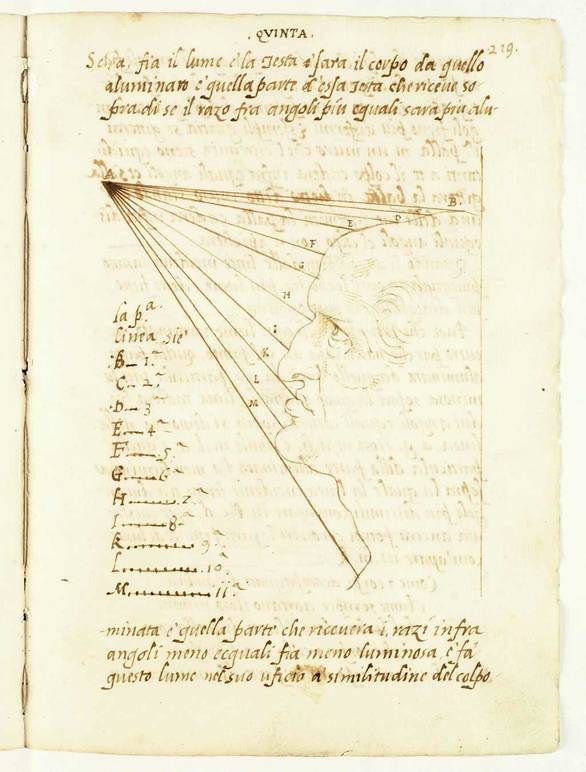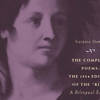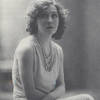Michelangelo's Sketches: A Theater of the Imagination
In Leonard Barkan’s Michelangelo: A Life on Paper (Princeton University Press, 2011), fragments of poetry and image details point to an intense theater of the imagination - comic and tragic, banal and profound - where quotidian experience, art history and worldly and spiritual desires engage and coalesce.
Barkan, a professor at Princeton University, spoke at Casa Italiana Zerilli-Marimò last week to introduce his new publication. The second in a series of scholarly discussions on the intersection of word and image, the presentation included commentary by Jane Tylus, NYU, Italian Studies, and Alex Nagel of NYU’s Institute of Fine Arts. A week earlier both participated in the presentation of Lina Bolzoni’s Il cuore di cristallo [The Transparent Heart, Einaudi 2010.]
Barkan explained that his goal is to reveal “a different Michelangelo” and to explore a more private, interior dimension of the artist’s life. Born in Florence in 1475, Michelangelo had lived nearly a century when he died in 1564. Thus, not only his work - but also his life - was at the center of the artistic transformation we call the Italian Renaissance. Thanks to Barkan’s research, Michelangelo’s thoughts, feelings, desires and doubts emerge as if taken from the pages of a diary. At the same time, the corpus of drawings he examines provides insight into the early modern world - through evidence of the artist’s relationships with students, family, patrons and friends.
For example, we learn that his nephew’s spending was a great nuisance to him and that, between his duties as a teacher and frequent commissions, he had very little time for a proper life of his own.
The desire for freedom – to imagine, love, dream, and improve - can be found variously expressed in broken phrases and sketches throughout the “carte” which circulated around his workshop. Barkan is interested in the relationship between the fragments he discovered – it seems that Michelangelo himself saw the paper as a kind of theater of memory. It wasn’t merely an empty space of potential representation but rather also a locale to which to return again and again, with designated 'rooms' for particular thoughts. His scratch paper was folded into quadrants, turned over, rotated 90 degrees. A grocery list for a banquet is complemented by a doodle of the foods included – arranged in a corresponding vertical column. In another more profound instance, Barkan demonstrates how a finger – a study of God’s hand for the Sistine Chapel ceiling – points to the word “caro” [or dear] within a poem, written perpendicular to it.
In a second place, these mixed words, verses, and drawings betray the “anxiety of influence” and the determination that could only belong to a young sculptor and painter at the turn of the 16th century. Following on the heels of Donatello and Leonardo was, at best, a daunting task. In this vein, perhaps the folios that engage his thoughts on the David disclose the most about the man, his genius and the world in which he lived. Michelangelo's David is not the triumphant adolescent in Donatello’s rendering but rather a colossal monument to measure. Displayed at its unveiling in 1504 in Piazza della Signoria as a symbol of the Florentine Republic, his sculpture captures the moment before victory. The biblical hero’s posture shows him sizing up his enemy, ready for action and on the brink of movement. In the drawings which Barkan uncovers from this period, the figure’s immense right arm, its hand poised to launch the fatal stone, is featured at the center of a discarded sheet. A strange “inscription” accompanies the sketch:
Davicte colla fromba
E io coll'arco
Michelangelo
David with his sling shot
And I with my bow.
- Michelangelo
Of course it is impossible to fully understand what the artist meant when he wrote and signed this verse one day between 1500 and 1504. But it is interesting to note the analogy he so clearly draws between himself as an artist and the humble young man who conquered the giant Goliath.
Later musings reveal how a Counter Reformation emphasis on the human, together with the loss of perfection inherent in a Christian rediscovery of antiquity, plays an integral part in Michelangelo’s thoughts and work. It is fascinating to discover the extent to which he identified with the raw materials of his creations. Of course the “prisoners” or slaves, lining the central corridor of the Accademia in Florence, constitute one of the more stunning examples of his artistic vision. The figures emerge in various states of release – even bursting forth – from the roughly hewn rock. But, as Barkan shows, his citations of Petrarch and his often purposefully crude imitations of the great poet’s style open our eyes to an artist who longed to be a leaf of paper or even a boulder that might be brought to life – perhaps loved and enlightened – by the hand of another or the grace of God.
In her commentary Jane Tylus noted the symmetry between the Counter Reformation emphasis on penance and grace – and the way that sculptural metaphors in Michelangelo’s poetry suggest a “chiseling of the spirit”. In the analogies which permeate the author’s often tortured verses, raw materials – like the human being in flesh and body - are to be marked, filed, carved and shaped.
Meanwhile Alex Nagel focused on the affinity between drawing and writing and the notion that these drawings might represent a kind of theater of the imagination. "An arena of fragments – where the images are fluid, morphing and incomplete", existing within a complex of visual associations which is perpetually in flux – like the mind itself.
Leonard Barkan is Arthur W. Marks '19 Professor of Comparative Literature and Director of the Society of Fellows in the Liberal Arts at Princeton University. His many books include The Gods Made Flesh: Metamorphosis and the Pursuit of Paganism, Transuming Passion: Ganymede and the Erotics of Humanism, and Unearthing the Past: Archaeology and Aesthetics in the Making of Renaissance Culture. He also writes prolifically on food and wine and is a frequent visitor to Casa Italiana.







































i-Italy
Facebook
Google+
This work may not be reproduced, in whole or in part, without prior written permission.
Questo lavoro non può essere riprodotto, in tutto o in parte, senza permesso scritto.